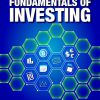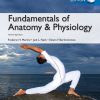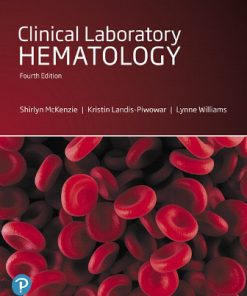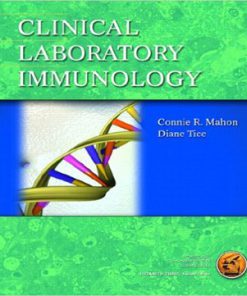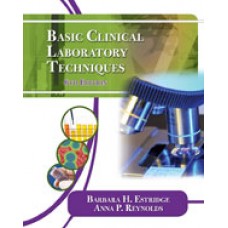Clinical Laboratory Hematology 3rd Edition McKenzie Test Bank
$35.00 Original price was: $35.00.$26.50Current price is: $26.50.
Clinical Laboratory Hematology 3rd Edition McKenzie Test Bank
This is completed downloadable of Clinical Laboratory Hematology 3rd Edition McKenzie Test Bank

Product Details:
- ISBN-10 : 0133076016
- ISBN-13 : 978-0133076011
- Author: Shirlyn McKenzie Ph.D. CLS (NCA) (Author), Lynne Williams (Author)
Clinical Laboratory Hematology, Third Edition, continues its stellar reputation as a comprehensive, yet reader-friendly, resource for all levels of hematology laboratory education, offering a visually engaging design and effective learning features that help students master the content. The text’s teaching and learning package includes an Instructor’s Manual, PowerPoint presentation slides, a test bank, image bank, and a companion website with resources for both instructor and students.
Table of Content:
Chapter 4: Hematopoiesis
Multiple-Choice Questions
Level I
1. All of the following are key components of hematopoietic differentiation except:
a. The formation of mature blood components with a finite life span
b. The differentiation of blood components when exposed to different cytokines
c. The commitment to produce blood cells only
d. The activation of programmed cell death
Correct answer: D
(Objective 1)
2. Which of the following classes of hematopoietic cells has the ability to self-renew?
a. Hematopoietic stem cell
b. Multipotential progenitor cell
c. Committed myeloid progenitor
d. Maturing cell
Correct answer: A
(Objective 2)
3. Which of the following classes of hematopoietic cells is committed to becoming an erythrocyte?
a. Hematopoietic stem cell
b. Multipotential progenitor cell
c. Committed lymphoid progenitor
d. BFU-E
Correct answer: D
(Objective 2)
4. Which of the following cells gives rise to the lymphoid and myeloid cells?
a. Committed lymphoid progenitor cell
b. Multipotential progenitor cell
c. Committed myeloid progenitor cell
d. CFU-GEMM
Correct answer: B
(Objective 2)
5. All of the following can be formed from CFU-GEMM except:
a. Neutrophil
b. Erythrocyte
c. Platelet
d. Lymphocyte
Correct answer: D
(Objective 3)
6. GM-CSF is considered a(n):
a. Early-acting cytokine
b. Late-acting cytokine
c. Lineage-specific cytokine
d. Early-acting and multilineage cytokine
Correct answer: D
(Objective 4)
7. Which of the following is an example of a lineage-specific cytokine?
a. Kit ligand
b. CFU-GEMM
c. IL-3
d. G-CSF
Correct answer: D
(Objective 4)
8. Which of the following types of cell signaling describes how SCF and Flt3 ligand predominately regulate stem cell homeostasis?
a. Autocrine
b. Paracrine
c. Juxtacrine
d. Endocrine
Correct answer: C
(Objective 5)
9. All of the following are negative regulators of hematopoiesis except:
a. TGF?
b. TNF
c. Kit ligand
d. MIP1?
Correct answer: C
(Objective 6)
10. All of the following are characteristics of an optimal hematopoietic microenvironment except:
a. Fibronectin
b. Extracellular matrix
c. Stromal cells
d. Synthetic cytokines
Correct answer: D
(Objective 7)
11. Which term is used to describe the point when two cells from the same precursor take a separate route of development?
a. Maturation
b. Differentiation
c. Commitment
d. Specialization
Correct answer: B
(Objective 1)
12. Which term is used to describe all cells antecedent to mature cells of a particular lineage?
a. Progenitor cells
b. Stem cells
c. Precursor cells
d. Maturing cells
Correct answer: C
(Objective 2)
13. Stem cells and progenitor cells can be measured by clonal assays in vitro. Maturing cells measured by:
a. Clonal assays
b. Phenotyping
c. Flow cytometry
d. Morphologic analysis
Correct answer: D
(Objective 3)
14. Which of the following lineages are derived from the bipotential progenitor cell CFU-EMk?
a. Erythrocytes and megakaryocytes
b. Eosinophils and megakaryocytes
c. Erythrocytes and monocytes
d. Eosinophils and monocytes
Correct answer: A
(Objective 3)
15. Which components are included in the stromal cell compartment?
a. Matrix proteins and regulatory cytokines
b. Adipocytes, endothelial cells, fibroblasts, T lymphocytes, and macrophages
c. Stem cells
d. Progenitor cells
Correct answer: B
(Objective 7)
Level II
1. An unknown cell is positive for CD34 and negative for CD38, lineage markers, and HLA-DR. Identify the cell.
a. MPP
b. Hematopoietic stem cell
c. CLP
d. CMP
Correct answer: B
(Objective 1)
2. Which lineage promotes differentiation and maturation primarily with the use of interleukins?
a. Monocytes
b. Erythrocytes
c. Platelets
d. Lymphocytes
Correct answer: D
(Objective 2)
3. Cytokine receptors that lack an intrinsic kinase domain transmit signals primarily through:
a. Transmembrane protein activation
b. Activation of cytoplasmic kinases
c. Heterodimer integral protein activation
d. Activation of mitochondrial networks
Correct answer: B
(Objective 4)
4. All of the following are hematopoietic growth factor receptor subgroups except:
a. Unique ligand-specific alpha chains with shared beta chains
b. Unique ligand-specific alpha chains that share GP130
c. Unique ligand-specific alpha chains with shared gamma chains
d. Unique ligand-specific alpha chains with shared zeta chains
Correct answer: D
(Objective 3)
5. Which of the following statements describes the role of transcription factors (TF) in hematopoiesis?
a. TF expression does not change during hematopoiesis.
b. TF function either to activate or suppress target gene expression.
c. TF block the differentiation pathway for hematopoietic precursors.
d. TF abnormalities are rarely seen in hematologic malignancies.
Correct answer: B
(Objective 5)
6. Which of the following molecules (synthetically generated) is administered to patients with renal disease to stimulate red cell production?
a. GM-CSF
b. Interleukin-2
c. EPO
d. G-CSF
Correct answer: C
(Objective 6)
7. All of the following are functions of the BM stroma except:
a. Adhesion of hematopoietic precursors
b. Cell-to-cell interaction
c. Synthesis of cytokines
d. Incorporation of essential metals into mature cells
Correct answer: D
(Objective 7)
8. Which component of the BM stroma is responsible for the formation of the ECM?
a. Cytokines
b. Fibroblasts
c. Osteoclasts
d. Osteoblasts
Correct answer: B
(Objective 7)
9. Signal transduction pathways are propagated primarily through which of the following?
a. Kinases and protein phosphorylation
b. Phosphatases and protein dephosphorylation
c. Protein methylation
d. Histone deacetylation
Correct answer: A
(Objective 4)
10. Which of the following cytokines inhibits stem cell proliferation?
a. Interferon
b. MIP-1?
c. Lactoferrin
d. TNF-a
Correct answer: B
(Objective 8)
11. Which of the following best describes the phenotype of the hematopoietic stem cell?
a. CD34+ CD38+Lin-HLA-DR-Rh123Bright, SCF-R+,TPO-R+
b. CD34+ CD33+CD38+Lin- Rh123Lo
c. CD34+ CD38-Lin-HLA-DR-Rh123Lo, SCF-R+,TPO-R+
d. CD3+,CD4+,CD5+,CD8+,CD38-,HLA-DR-
Correct answer: C
(Objective 1)
12. All of the following function primarily as multilineage (early acting) growth factors except:
a. IL-4
b. GM-CSF
c. IL-3
d. SCF
Correct answer: A
(Objective 2)
13. What property primarily determines the specific targets of hematopoietic growth factors?
a. Unique transcription factors in the target cells
b. Unique signaling pathways in the target cells
c. Unique receptors in the membranes of the target cells
d. Lack of inhibitors to the growth factor in question
Correct answer: C
(Objective 3)
14. Several cytokines are used for clinical purposes. Which three cell lines are primarily increased by the injection of EPO, TPO, and CFU-GM?
a. Lymphocytes, monocytes, and platelets
b. Erythrocytes, platelets, and granulocytes
c. Monocytes, platelets, and stem cells
d. Stem cells, precursor cells, and maturing cells
Correct answer: B
(Objective 6)
15. Which component allows the hematopoietic precursors to attach to the bone marrow microenvironment?
a. SCF
b. FL
c. CAM
d. IFN
Correct answer: C
(Objective 7)
Short-Answer Questions
1. Compare and contrast the HSC and the progenitor cells. How are they similar? How are they different?
Answer: The hematopoietic stem cell (HSC) has capabilities of self-renewal, and helps give rise to progenitor cells that will create the sequence of blood cell maturation. The main difference between the HSC and the progenitors is their outcomes. The HSC has the capability to give rise to any of the blood cell lineages, whereas the progenitors are more restricted in their ability to produce different types of blood cells. The two types of cell are morphologically indistinguishable.
(Objective 2, Level I)
2. Explain how hematopoiesis uses autocrine, paracrine, and juxtacrine signaling. Choose one and provide an example of signaling through that pathway.
Answer: Autocrine signaling: produced by and act on the same cell. Example: Rarely seen; T-cells and IL-2.
Paracrine signaling: produced by and act on adjacent cells. Example: progenitors and precursors adjacent to the BM stroma.
Juxtacrine signaling: The cytokine remains membrane-bound, which requires interaction between membrane and membrane receptors to achieve the desired effect. Example: stem cells and SCF or FL.
(Objective 5, Level I)
3. Explain the JAK-STAT signaling pathway, and describe how it can contribute to disease.
Answer: JAK: Janus family PTKs (protein tyrosine kinases) interact with the STAT transcription factors (signal transducers and activators of transcription). Once STAT proteins are phosphorylated by activated JAK kinases, they dimerize, translocate to the nucleus, bind to cytokine-specific DNA sequences, and activate (or inhibit) specific gene expression. Abnormalities in this pathway have been shown to cause polycythemia vera and other myeloproliferative disorders.
(Objective 4 and 5, Level II)
4. Explain the role of stromal cells in the hematopoietic microenvironment.
Answer: Stromal cells express homing receptors for hematopoietic cells and produce components of the extracellular matrix (fibronectin, hemonectin, collagen, etc); they synthesize and secrete cytokines for growth, differentiation, and negative regulation; they produce membrane-bound cytokines for juxtacrine signaling (e.g., SCF, FL, SCI) to hematopoietic precursor cells.
(Objective 7 and 8, Level II)
5. Explain the role of selected cytokines in the treatment of disorders affecting the hematopoietic system.
Answer: EPO: stimulation of erythropoiesis in renal disease.
G-CSF/GM-CSF: recovery from treatment-induced myelosuppression.
IL-3/GM-CSF/EPO: therapy of MDS.
(Objective 6, Level II)
People Also Search:
clinical laboratory hematology
clinical laboratory hematology 3rd edition mckenzie
clinical laboratory hematology 3rd edition mckenzie download scribd
clinical laboratory hematology 3rd edition mckenzie test bank download pdf
clinical laboratory hematology mckenzie
You may also like…
Test Bank
Test Bank for Clinical Laboratory Hematology, 4th Edition, Shirlyn McKenzie, Lynne Williams
Test Bank
Test Bank for Clinical Immunology and Serology A Laboratory Perspective, 3rd Edition: Stevens
Solution Manual
Solution Manual for Clinical Laboratory Hematology, 3rd Edition, Shirlyn B. McKenzie, Lynne Williams


